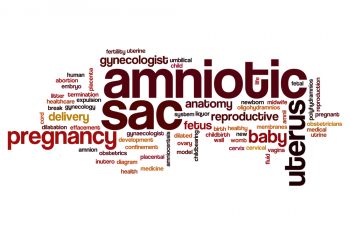Experiencing a miscarriage can be an emotionally challenging time for any expectant parent. Understanding the physical aspects of a miscarriage, and knowing the answer to some questions such as what does miscarriage tissue look like, may help provide some clarity during this difficult period.
In this blog post, we’ll discuss the appearance of miscarriage tissue at different stages of pregnancy loss and provide information on what to expect during this process.
Early miscarriage tissue
In early miscarriage, which occurs within the first trimester of pregnancy, the expelled tissue may resemble heavy menstrual bleeding or clotting.

At this stage, it can be challenging to identify specific pregnancy tissues, as the embryo or fetus is still very small. You may notice small, grayish-white pieces of tissue mixed with blood clots.
These clots can vary in size, ranging from the size of a pea to larger, golf ball-sized clots.
Late miscarriage tissue
A late miscarriage, occurring during the second trimester of pregnancy, may involve the expulsion of more recognizable pregnancy tissues. The expelled tissue may include:
- The placenta, which is a spongy, disc-shaped organ that provides nutrients and oxygen to the baby. The placenta may appear as a large, red or grayish mass.
- The amniotic sac, which is a thin, transparent membrane that surrounds and protects the baby. The amniotic sac may be visible as a clear or slightly opaque film-like material.

- The fetus itself, which may be identifiable by its developing limbs, facial features, and body. The size and appearance of the fetus will depend on the stage of development at the time of the miscarriage.
What to do if you suspect a miscarriage
If you suspect that you are experiencing a miscarriage, it is essential to seek medical attention as soon as possible. Your healthcare provider can confirm whether a miscarriage has occurred and provide guidance on the next steps.
If you have passed tissue during a suspected miscarriage, your healthcare provider may ask you to collect the tissue for examination. This can help determine the cause of the miscarriage and inform future pregnancy care. To collect the tissue, you can:
- Use a clean container or plastic bag to catch the tissue as it passes.
- Wear disposable gloves to handle the tissue if needed.
- Store the tissue in a cool place, such as a refrigerator, until you can bring it to your healthcare provider.
Emotional support and recovery
Experiencing a miscarriage can be an emotionally challenging time, and it’s crucial to allow yourself the space and support needed to grieve and heal. Reach out to friends, family members, or support groups to share your feelings and experiences.

You may also consider speaking with a mental health professional, such as a therapist or counselor, who can provide guidance and coping strategies during this difficult period.
Understanding what miscarriage tissue looks like at different stages of pregnancy loss can help provide clarity during an emotionally challenging time. If you suspect a miscarriage, it’s essential to seek medical attention and follow your healthcare provider’s guidance.
Remember that emotional support and self-care are crucial during this period, and seeking help from loved ones or mental health professionals can aid in the healing process.


